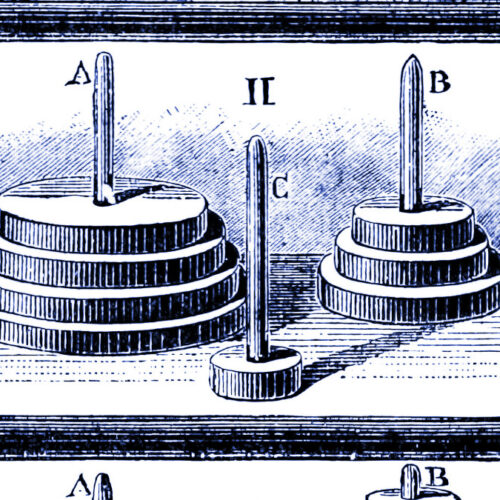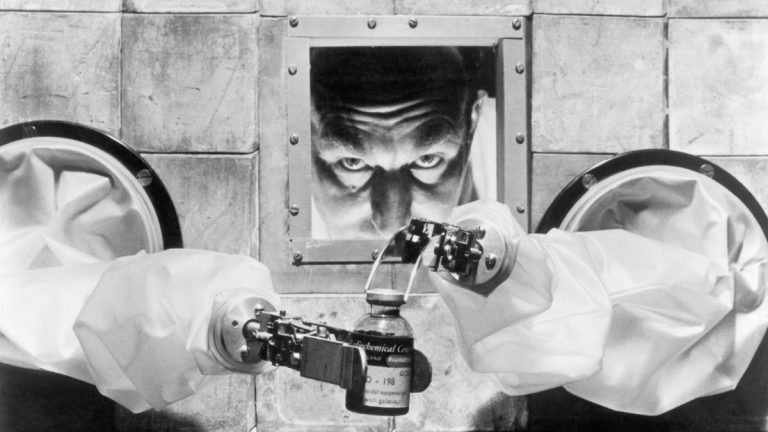Experimental retina implants give mice infrared vision

it’s not Cyberpunk vision quite yet
A light-sensitive wire mesh implanted in the retina helps restore nerve impulses.
Human vision relies on photoreceptor cells in the retina that react to visible light and trigger neurons in the optic nerve to send signals to the brain. Degradation of these photoreceptors is the leading cause of vision impairments, including blindness.
However, a team of scientists at China’s Fudan University has recently built prototype retinal implants that can replace the failing photoreceptors and potentially provide infrared vision as a bonus. Sadly, they’ve only been tested in animals, so we’re still rather far away from making them work like Cyberpunk 2077-style eye augments.
Vision on chip
Earlier work on retinal implants that restored at least some degree of vision to the blind involved using electrode arrays that electrically stimulated neurons in the back of the retina, taking the place of the damaged photoreceptor cells. A patient had to wear a camera mounted on a pair of glasses that sent signals to the implant to activate this signaling. These implants required a power source to work, were unreliable, difficult to use, and had limited resolution, and the surgical procedure necessary to put them in the eye was extremely complicated.
For all these reasons and more, they were withdrawn from the market. What the Fudan team achieved was an implant that worked without the external camera and without a power source.
The development process started with extensive simulations aimed at pinpointing the right material. The ideal candidate was a photovoltaic material—it had to generate photocurrent without any external voltage in response to a broad spectrum of light. The primary material that emerged from these simulations was tellurium, a rare silver-white element that shares properties of both metals and nonmetals. The Fudan team fabricated prototype retinal implants using a mesh of tellurium nanowires.
Once the implants were ready, the scientists conducted a test campaign—first in mice, then with non-human primates.
Making blind mice see
For the experiments, the team selected genetically blind mice that lost their sight shortly after birth due to deteriorating photoreceptor cells. Tellurium mesh devices were implanted into a narrow space between the photoreceptor layer and the retinal pigment epithelium, a site where the implants could interface with the neurons. After ensuring the implants were biocompatible, weren’t rejected, and didn’t cause any excessive inflammation, the team started checking how well the mice performed visual tasks.
The first test was pretty simple and relied on shining the light into the mice’s eyes to see if this would trigger their pupils to contract. The results seemed promising—the pupils in blind mice constricted as they should in healthy animals. The second, somewhat more complex task was designed to check if the implant enabled the mice to consciously perceive light—in other words, whether the visual stimuli were properly converted into signals in the right areas of their brains.
The animals were put in a well-lit cage and were rewarded with water if they licked a surface within three seconds after the lights went out. Here, implanted mice had a success rate of over 85 percent compared to 98 percent scored by a control group of non-implanted mice with healthy vision (untreated blind mice scored between 25 and 26 percent, which is no better than random). The implanted mice could also localize an LED light source and even discern different shapes (triangles, squares, circles) almost as well as the mice.
And on top of that, they gained a superpower. Tellurium meshes respond to a wider range of the light spectrum than the normal human visual range. They’ll generate current when exposed to near-infrared wavelengths that a healthy human or rodent eye can’t see. Healthy mice excelled at the tasks the team threw at them when the lighting was kept in the standard visual range, but when lights were switched to infrared, they scored no better than chance. The implanted mice, on the other hand, scored very well—a bit worse than in the visual range, but not by much.
Finally, the tellurium meshes, especially the infrared vision capability they offered, were tested on healthy macaques, an animal model that’s much closer to humans than mice. It turned out implanted macaques could perceive infrared light, and their normal vision remained unchanged.
However, there are still a few roadblocks before we go all Cyberpunk with eye implants.
Sensitivity issues
Tellurium meshes, as the Fudan team admits in their paper, are far less sensitive to light than natural photoreceptors, and it’s hard to say if they really are a good candidate for retinal prostheses. The problem with using animal models in vision science is that it’s hard to ask a mouse or a macaque what they actually see with the implants and figure out how the electrical signals from their tellurium meshes are converted into perception in the brain.
Based on the Fudan experiments, we know the implanted animals reacted to light, albeit a bit less effectively than those with healthy vision. We also know they needed an adaptation period; the implanted mice didn’t score their impressive results on their first try. They needed to learn what the sudden signals coming from their eyes meant, just like humans who had used electrode arrays in the past. Finally, shapes in the shape recognition tests were projected with lasers, which makes it difficult to tell how the implant would perform in normal daylight.
There are also risks that come with the implantation procedure itself. The surgery involves making a local retina detachment, followed by a small retinal incision to insert the implant. According to Eduardo Fernández, a Spanish bioengineer who published a commentary to Fudan’s work in Science, doing this in fragile, diseased retinas poses a risk of fibrosis and scarring. Still, Fernández found the Chinese implants “promising.” The Fudan team is currently working on long-term safety assessments of their implants in non-human primates and on improving the coupling between the retina and the implant.
The Fudan team’s work on tellurium retinal implants is published in Science.
Science, 2025. DOI: 10.1126/science.ady4439
Jacek Krywko is a freelance science and technology writer who covers space exploration, artificial intelligence research, computer science, and all sorts of engineering wizardry.












